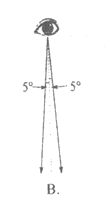题目内容
【题目】I want to have ________ ice-cream and _______ chocolate.
A. some; an B. some; a C. some; some D. any; any
【答案】C
【解析】句意:我想要一些冰淇淋和一些巧克力。ice-cream和chocolate为不可数名词,前面不能用不定冠词a/an,排除A,B;some用于肯定句,any用于否定句和疑问句,故答案为C。

练习册系列答案
 灵星计算小达人系列答案
灵星计算小达人系列答案 孟建平错题本系列答案
孟建平错题本系列答案
相关题目



